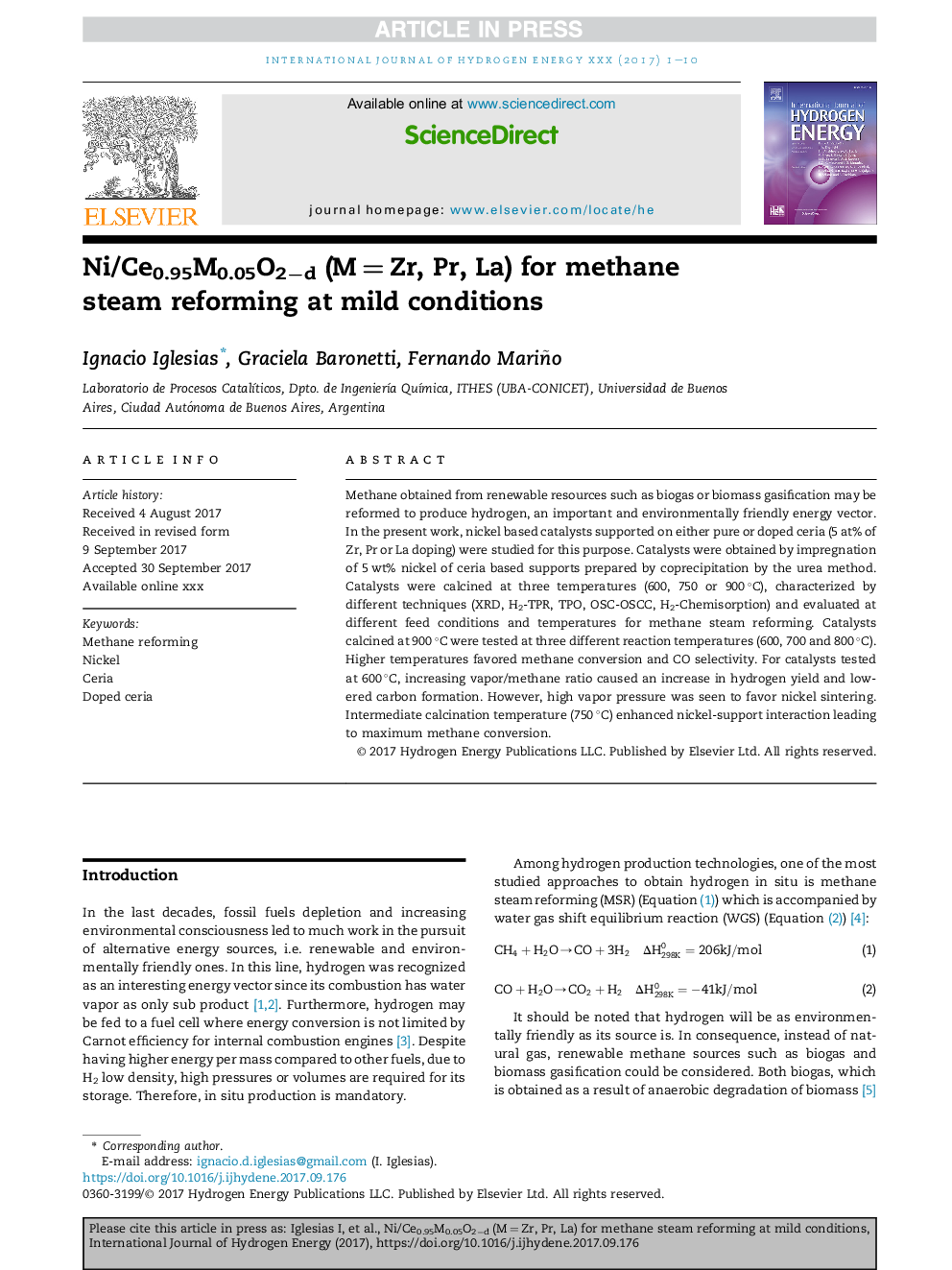| Article ID | Journal | Published Year | Pages | File Type |
|---|---|---|---|---|
| 7709015 | International Journal of Hydrogen Energy | 2017 | 10 Pages |
Abstract
Methane obtained from renewable resources such as biogas or biomass gasification may be reformed to produce hydrogen, an important and environmentally friendly energy vector. In the present work, nickel based catalysts supported on either pure or doped ceria (5â¯at% of Zr, Pr or La doping) were studied for this purpose. Catalysts were obtained by impregnation of 5â¯wt% nickel of ceria based supports prepared by coprecipitation by the urea method. Catalysts were calcined at three temperatures (600, 750 or 900â¯Â°C), characterized by different techniques (XRD, H2-TPR, TPO, OSC-OSCC, H2-Chemisorption) and evaluated at different feed conditions and temperatures for methane steam reforming. Catalysts calcined at 900â¯Â°C were tested at three different reaction temperatures (600, 700 and 800â¯Â°C). Higher temperatures favored methane conversion and CO selectivity. For catalysts tested at 600â¯Â°C, increasing vapor/methane ratio caused an increase in hydrogen yield and lowered carbon formation. However, high vapor pressure was seen to favor nickel sintering. Intermediate calcination temperature (750â¯Â°C) enhanced nickel-support interaction leading to maximum methane conversion.
Related Topics
Physical Sciences and Engineering
Chemistry
Electrochemistry
Authors
Ignacio Iglesias, Graciela Baronetti, Fernando Mariño,
